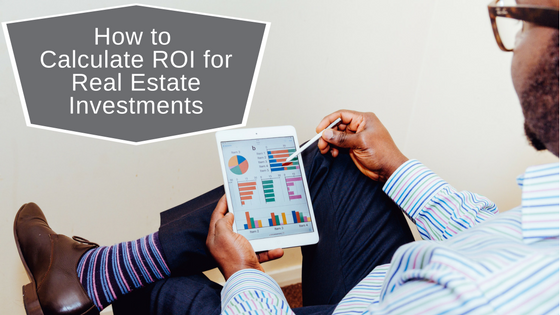Return on investment (ROI) is an accounting term that indicates the percentage of invested money returned to an investor after the deduction of associated costs. For the non-accountant, this may sound confusing, but the formula may be simply stated as follows:
But while the above equation seems easy enough to calculate, a number of variables including repair and maintenance expenses and methods of figuring leverage—the amount of money with interest borrowed to make the initial investment—come into play, which can affect ROI numbers. In many cases, the ROI will be higher if the cost of the investment is lower. When purchasing property, the terms of financing greatly impact the price of the investment; however, using resources like a mortgage calculator can help you save money on the cost of the investment by helping you find favorable interest rates.
The article below explains the two methods by which ROI calculations are made:
The Cost Method and the Out of Pocket Method
The Cost Method
The cost method calculates ROI by dividing the equity by all costs.
As an example, assume a real estate property was bought for $100,000. After repairs and rehab of the property, which costs investors an additional $50,000, the property is then valued at $200,000, making the investors' equity position in the property 200,000 - (100,000 + 50,000) = $50,000.
The cost method requires the dividing of the equity position by all the costs related to the purchase, repairs, and rehab of the property.
ROI, in this instance, is .33 % - $50,000 divided by $150,000.
The Out of Pocket Method
The out of pocket method is preferred by real estate investors because of higher ROI results.
Using the numbers from the example above, assume the same property was purchased for the same price, but this time the purchase was financed with a loan and a down payment of $20,000. Out of pocket expense is therefore only $20,000, plus $50,000 for repairs and rehab, for a total out of pocket expense of $70,000. With the value of the property at $200,000, the equity position is $130,000.
The ROI, in this case, is .65 % - $130,000 divided by $200,000. The result is just one percent less than double the first example. The difference, of course, is attributable to the loan - leverage as a means of increasing ROI.
Equity Is Not Cash
Before the ROI, cited above, may be realized in actual cash profits, the properties must be sold. Often, a property will not sell at its market value. Frequently, a real estate deal will be consummated at below the initial asking price, reducing the final ROI calculation for that property. Keep in mind, also, that there are costs associated with selling a real estate property - again, there may be expenses needed for repairs, painting or landscaping. The costs of advertising the property should also be added up, along with appraisal costs and the commission to the real estate broker.
Both advertising and commission expenses may be negotiated with the service provider. Real estate developers, with more than one property to advertise and sell, are in a better position to negotiate favorable rates with media outlets and brokers. ROI on multiple sales, however, with varying costs for advertising, commission, financing and construction present complex accounting issues that are best handled by an accountant.
Property Cash Flow
An investor may have $30,000 in equity in a commercial rental property for which he paid $10,000 for an ROI of 300%. The property also yields $500 a month in rentals, for a total of $6,000 annually. That's a 60% ROI on the property's cash flow - $6000 divided by the $10,000 cost of investment.
Complications in Calculating ROI
Complications in calculating ROI can occur when a real estate property is refinanced, or a second mortgage is taken out. Interest on a second, or refinanced, loan may increase, and loan fees may be charged, both of which can reduce the ROI, when the new numbers are used in the ROI equation. There may also be an increase in maintenance costs and property taxes, and an increase in utility rates if the owner of a residential rental or commercial property pays these expenses.
Complex calculations may also be required for property bought with an adjustable-rate mortgage (ARM) with a variable escalating rate charged annually through the duration of the loan.
The Bottom Line
Calculating ROI on real estate can be simple or complex, depending on all the variables mentioned above. In a robust economy, real estate investments, both residential and commercial, have proven to be very profitable. Even in a recessionary economy, when prices fall, and cash is scarce, many bargains in real estate are available for investors with the money to invest. When the economy recovers, as it invariably does, many investors will reap a handsome profit.
For income tax or capital gains tax purposes, however, real estate property owners are urged to get professional tax advice from a reliable source before filing. Property tax is another factor in the equation when calculating return — if a property owner believes a property tax assessment is too high, in most cases, the assessment may be challenged, and often a judgment is made in favour of the challenger.
Source

